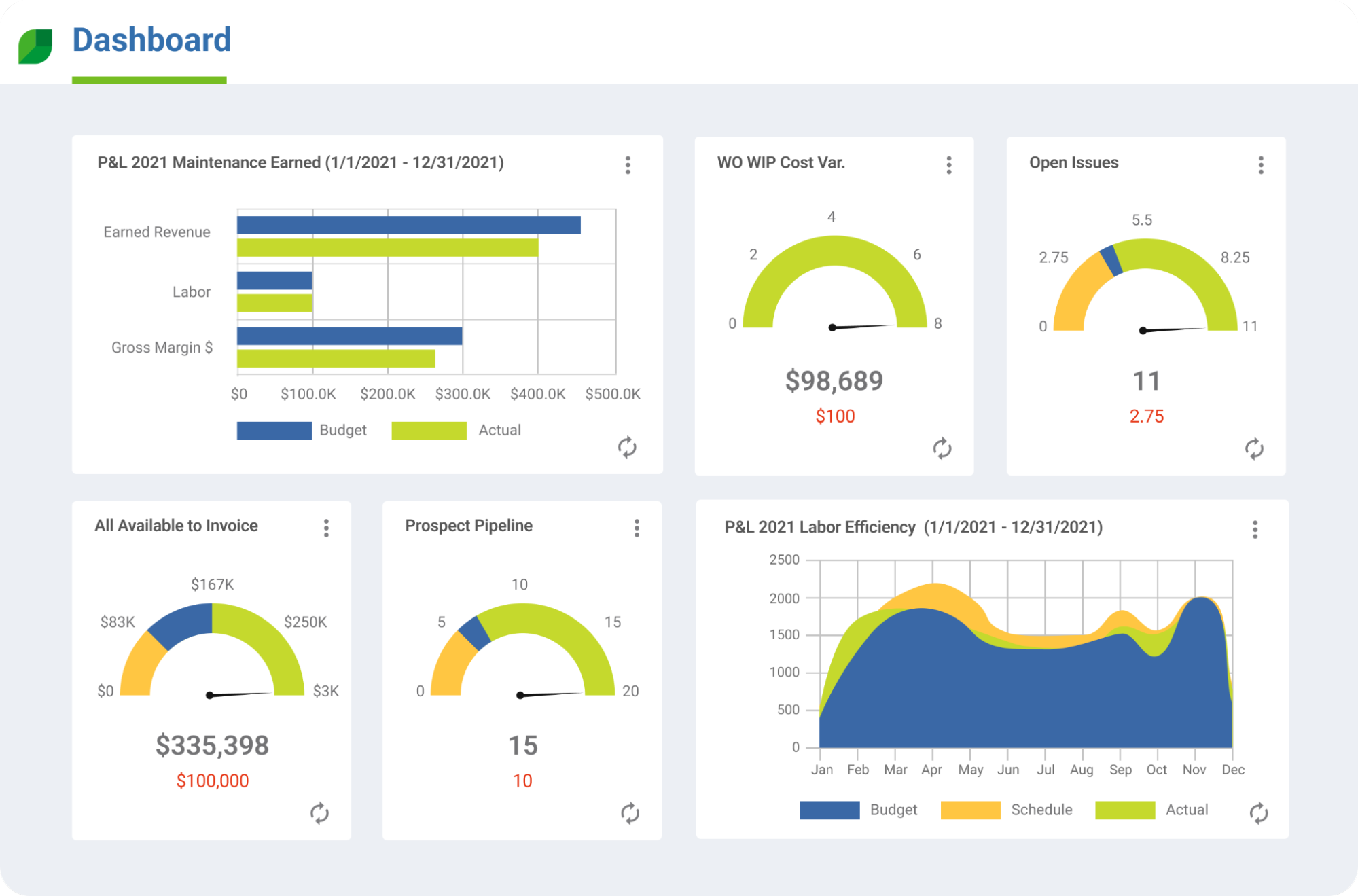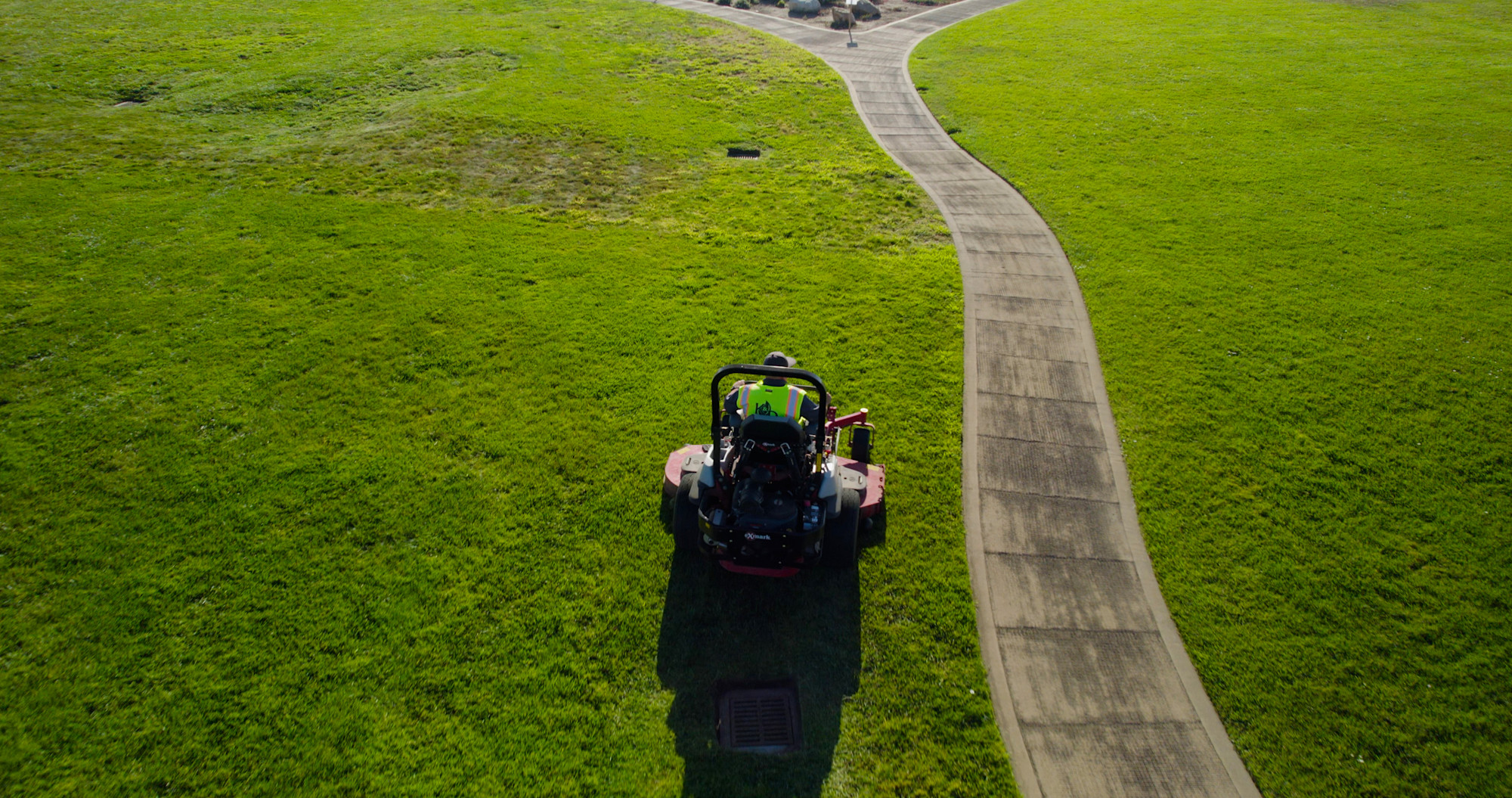In the competitive landscaping industry, the difference between merely staying afloat and thriving as a growing company hinges on identifying and implementing the most profitable services.
Strategic adaptation is essential whether you're starting a new lawn care business and need to establish a clear path to profitability or managing an established enterprise seeking to enhance its cash flow.
Landscaping is an industry with immediate profit potential. However, the low startup costs, overhead, and licensing requirements are counterbalanced by immediate expenses for payroll, equipment, maintenance, and other essentials.
The challenge in scaling a landscape business is managing operational costs while maximizing returns. This article highlights eight of the most profitable landscaping services and their main pros and cons to help you stay on the right track.
8 most profitable landscaping services
To ensure profitability, lawn care and landscape maintenance services must optimize revenue potential by effectively managing labor, marketing, and capital equipment expenditures. Maintaining a cost balance should be a primary focus for all landscaping companies.
Lawn mowing services
Pros | Cons |
Steady revenue stream Highly scalable Low barrier to entry for a small business | Significant labor requirements Seasonal and weather-dependent Intense competition |
Lawn care services are fundamental to maintenance contracts in the green industry, whether your company primarily serves homeowners or commercial properties.
The profitability of lawn mowing services depends on numerous factors, including:
Competitive pricing
Operational efficiency
Effective customer acquisition and retention
Seasonal demand and weather conditions
Geographic location
When landscape business owners are vigilant about cost management and stay informed about industry trends, they can maintain profitability even as the industry evolves.
For every lawn maintenance contract, your team should upsell with edging, aerating, seeding, and fertilizing. Mulching and cleaning outdoor spaces are easy upsells and yield a high return with minimal time investment.
Dry creek installation
Pros | Cons |
Diversification opportunity for landscaping companies Higher margins for specialized services Low maintenance | Limited demand compared to other services Experienced workers required Differentiation in terms of cost and quality is critical |
Dry creek beds are a popular landscape feature in commercial and residential real estate for draining moisture away from buildings.
Because dry creek installation requires minimal resource allocation of landscaping tools and equipment, it benefits landscaping company owners focused on protecting their profit margins.
A dry creek bed—a dry stream bed or dry riverbed—can serve as a high-quality replacement for bulky plastic downspout splash guards.
→ Hardscaping an area prone to flooding during heavy rain and winter runoff is a great way to turn the challenges of a property into an upsell opportunity.
French drain installation
Pros | Cons |
Diversification opportunity for landscaping companies Higher margins for specialized services Low maintenance | More limited demand based on geographical location Experienced workers required Higher material costs |
French drains address a property’s more significant drainage challenges. Installing these can provide a profitable revenue stream for landscaping companies, especially during wet seasons when potential clients face repeated flooding.
Build a business plan incorporating innovative French drain installation services to offer prospective clients automated monitoring and differentiate your services from the competition.
→ Although installation services are one-off, they generate leads for maintenance service contracts.
With dry creek and French drain installation, there are upsell opportunities in offering different material quality and landscape design complexity.
As installations get more complicated, labor costs may rise, but drain installation is still highly profitable.
Flower bed or garden construction
Pros | Cons |
Diversification opportunity for landscaping businesses Recurring business Ample upsell and cross-sell possibilities | Specialized knowledge and permitting needed High maintenance requirements Seasonal business |
Building or maintaining flower beds, or color application, is another landscape design service with high-profit potential.
Commercial properties may need year-round flower beds to line patios and paths and decorative planters near entryways. Both businesses and homeowners may be interested in native and pollinator gardens with plants selected based on sun exposure, optimizing irrigation, and companion planting.
Color application is an easy upsell with a maintenance lawn mowing contract. Small companies may consider subcontracting to a master gardener to deliver exceptional service backed by proven know-how.
With flower bed and garden installation, landscapers can suggest lighting and irrigation systems installation and ongoing maintenance.
Landscape maintenance
Pros | Cons |
Steady cash flow from recurring work Cost efficiency High customer retention | Fluctuating labor costs when specialized care is needed Additional costs to purchase and maintain equipment High market saturation |
Landscape maintenance services are comprehensive packages that address every aspect of a property’s exterior, including lawn care. Service packages may include:
Spring and fall maintenance
Mowing and related services
Pest control
Maintaining shrubs and hedges
Irrigation and sprinkler systems
Tree care
Flower bed maintenance
Because of the predictable nature of landscape maintenance and the minimal resources required, there is high profit potential, primarily when crews work on several properties within a single neighborhood.
Landscape maintenance services are among the best ways to build long-term relationships with loyal customers—one of the best ways to enhance your bottom line. However, many of these landscaping services are seasonal, so consider branching into snow removal services to sell year-round contracts in your market.
Mulching
Pros | Cons |
Low material and labor costs Stands out as an improvement to the property Upsell opportunities | Typically seasonal Difficult to differentiate from other providers Weather dependent |
Mulching can be profitable when landscaping companies purchase materials in bulk and optimize scheduling because the service requires minimal skill and can often be completed quickly. The main considerations are material transportation and resource allocation.
For many markets, mulching is an easy sell as an add-on service for landscape maintenance plans, including lawn mowing, fertilization, and seasonal cleanups.
Snow removal
Pros | Cons |
Complementary to core landscaping services Ample upsell opportunities Lower overall labor needs | Extremely seasonal High equipment investment and maintenance costs Skilled labor required |
In many parts of the U.S. and Canada, snow removal is the default service for landscaping businesses to offer during colder months. On a small scale, initial costs to implement snow removal services are low.
Initial costs to serve larger contracts—such as purchasing snow plows, can be high. Some landscapers maintain profitability by working with subcontractors to land large contracts while keeping costs low.
Because snowfall varies yearly, one-off service requests through the winter months can make resource allocation challenging and create unpredictable revenue streams.
Selling year-round maintenance contracts that include snow removal with other property maintenance ensures operations managers can plan routes and assign field teams to maintain profitability.
Winter maintenance involves more than just moving snow, and there are upsell opportunities to drive profitability, such as:
Applying salt in parking lots
Applying sand in parking lots
Stair maintenance
After-hours maintenance
Curb clearing
Yard cleanup
Pros | Cons |
Great exposure to new clients Limited equipment requirements Lower overall labor needs | Typically seasonal Difficult to differentiate from other providers Weather dependent |
Even if yard cleanup—raking, leaf removal, weed control, etc—is a small part of your overall service, it can affect your total revenue.
Yard cleanup typically has lower costs in terms of equipment and labor and is easily added to a landscape maintenance contract. Depending on the size of your business, it may not be profitable to offer it as a standalone service.
The shoulder months typically experience the highest demand for yard cleanup landscaping services, so they can help you maintain your profit margins on either side of the winter slowdown.
What is a good profit margin for landscaping?
Determining what your net profit should be depends on several factors. However, a solid profit margin is critical to a company’s long-term success.
Typical landscaping profit margins vary depending on your company’s age, verticals, market, and specific services. But industry best practices suggest these averages as reliable benchmarks:
15% profit for startup landscaping businesses.
10-15% for businesses focused on commercial landscaping.
15-20% for businesses focused on residential landscaping.
45% for established landscaping companies in growth mode.
There are various ways to ignite growth in your company, such as:
✓ Offering new services
✓ Correcting your pricing model
✓ Increasing operational efficiency
✓ Expanding your service area
A critical aspect of growing a landscaping business is ensuring new offerings don’t take away from your lawn maintenance.
Tracking real-time metrics surrounding your existing services is one of the best ways for landscaping companies to ensure they maintain quality and reliability at every property on every route.
The cloud-based Aspire universal business management platform has the tools businesses need to maintain oversight of your business as you drive new profitability, including:
Client portal for scheduling service, raising issues, paying invoices, and communicating with operations managers
Drag and drop scheduling and push-sync updates for seamless last-minute route changes
Geo-tagged clock-in and clock-out for teams in the field to track labor to individual work tickets
Mobile app functionality with task lists for individual job sites
End-to-end processes, from estimates to invoicing, with real-time data insights on customizable dashboards
As a full suite of tools, Aspire provides transformative insights for new and established landscaping companies.
How to increase the profits of a landscaping business?
The landscaping services industry offers plenty of growth opportunities. Between 2018 and 2023, the U.S. market grew by 4.7% on average, exceeding $150 billion in 2023.
Profit-generating tactics for growth-minded landscaping businesses include:
Diversifying into new verticals where you can provide high-quality services
Upselling related landscaping services
Marketing across traditional channels and social media
Implementing cost-cutting measures
Exploring customer retention techniques
Investing in new technologies
Driving profitability is about more than increasing total revenue. Tracking expenses against income is essential, and Aspire streamlines operations while offering real-time data insights. This enables you to make timely, informed decisions to boost your sales, productivity, and profit margins.
What is the best business structure for landscaping?
The structure you choose for a landscaping company can affect the profitability. From sole proprietorships to corporations, each presents its own pros and cons regarding tax implications, legal aspects, and potential growth. The main options include:
Sole Proprietorship: This business structure is the easiest to set up. The company owner has complete control over the business decisions and operations. One point of concern is personal liability; the owner is personally responsible for business debts and legal obligations.
Limited Liability Company (LLC): Delivers limited liability protection, pass-through taxation, and organizational flexibility advantages. However, the upfront work, legal fees, and compliance requirements are greater than those of a sole proprietorship. In addition, the structure may limit landscaping businesses’ ability to raise capital compared to a corporation.
Partnership: Partnerships are easy to establish, ideal for collaborative ownership, and enable shared decision-making. Profits and losses pass through to individual partners' tax returns. Partners should be aware that they share personal liability for the business.
Corporation: This business structure extends strong liability protection for owners (i.e., shareholders), making raising capital by selling stocks easier. Unlike other options, personal and business assets remain separate. However, with substantial regulatory requirements, corporations are complex to set up and maintain.
Corporations and LLCs often provide better structures for raising capital and facilitating business growth than sole proprietorships or partnerships. However, corporation owners’ earnings can be taxed twice if structured as a C Corp rather than an S Corp.
Selecting a business structure depends on company size and the ambitions of a landscaping company owner.
Some want to build a regional green industry brand with a fleet and comprehensive service offerings.
Others want to maximize profitability within a set service area with standard lawn care services and a few employees.
The proper business structure can ensure you hold onto more profits from your hard work.

Ready to improve your profit margins?
Whether you run a fleet of vehicles or are a sole proprietor, owning a landscaping business promises limitless growth opportunities.
→ Focus on highly profitable services, diversify, and apply best practices, such as implementing a state-of-the-art business management platform.
The right software, such as Aspire, can help you increase total revenue and keep a higher share of profits.
Ready to trim costs and grow your profit margin with Aspire? Schedule a free demo.










